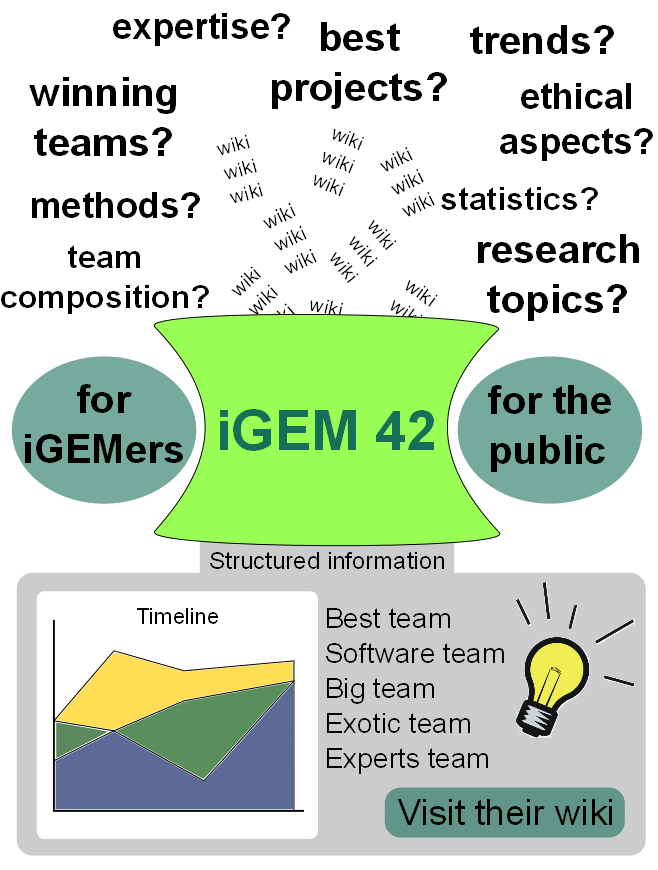Team:Heidelberg/HumanPractice
From 2013.igem.org
(Difference between revisions)
Nils.kurzawa (Talk | contribs) m |
JuliaS1992 (Talk | contribs) |
||
| Line 37: | Line 37: | ||
<div class="jumbotron"> | <div class="jumbotron"> | ||
<div class="container"> | <div class="container"> | ||
| - | + | </html>[[File:Heidelberg iGEM42 GA.png|400px|center]]<html> | |
| + | <h1>iGEM 42</h1> | ||
<p>To get a better access to the iGEM community we thought this year to generate a platform with easy acces to past iGEM-Team information and approaches.</p> | <p>To get a better access to the iGEM community we thought this year to generate a platform with easy acces to past iGEM-Team information and approaches.</p> | ||
<p><a class="btn btn-default btn-lg" href="https://2013.igem.org/Team:Heidelberg/HumanPractice/iGEM42">Read more</a></p> | <p><a class="btn btn-default btn-lg" href="https://2013.igem.org/Team:Heidelberg/HumanPractice/iGEM42">Read more</a></p> | ||
Revision as of 16:41, 4 October 2013


Human Practice by involving different genereations
Human Practice – Overview
When we searched for a definition of „Human Practices“ on the internet and in various books we did not obtain a concrete result. However, we found several key words that appeared in outstanding frequency: “Communication”, “Information”, “Abstraction” and “Interdependency”. This would for sure match the ideas of Paul Rabinow and Gaymonn Bennett, founders of the Human Practices division of the Synthetic Biology Engineering Research Center (synberc) and authors of “Designing Human Practices”.
Following those four – admittedly, diverse – keywords, we “designed” our very own Human Practices advance, hoping that we would not have to reject this “experiment”. Hence, we focused on three different approaches: Firstly, an outreach-strategy in which we stimulated interaction between experts, the public and us, where we tried to find an appropriate level of abstraction in order to allow exchange of ideas. Secondly, we enhanced communication about iGEM and our project in the media and press, in order to get more people attracted to our discussions. And thirdly, we propose iGEM42, an information-tool that allows the user to easily discover the expertise and inventiveness that the iGEM-community holds.
These three approaches should create interaction with different groups within society, as synthetic biology in general and our project in particular have implications for every individual, as we are all interdependent. Everyone, may he be a scientist or not, has an equally valuable opinion about synthetic biology. What we want to achieve with our Human Practice advance is to open minds, broaden horizons and minimize prejudices and concerns.
These three approaches should create interaction with different groups within society, as synthetic biology in general and our project in particular have implications for every individual, as we are all interdependent. Everyone, may he be a scientist or not, has an equally valuable opinion about synthetic biology. What we want to achieve with our Human Practice advance is to open minds, broaden horizons and minimize prejudices and concerns.
Outreach
For getting to know many different point of views from the outside of synthetic biology society we spoke with many different people and worked together also with artists.
 "
"









